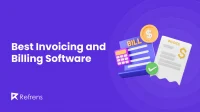If you have normal employment, you can expect a pay boost almost every quarter or year if you do well. In some jobs, everyone gets a wage boost on a regular basis.
However, if you’re a freelancer who sets your own rates and pitches them to clients, you could forget that you have the option to increase your fees.
As a freelancer, raising your prices is a decision you make depending on how much you value your work. It’s only natural that as you gain more clients and experience, you’ll want to boost your charges, and for good cause.
As your freelancing business grows, you’re not only dealing with inflation and rising business expenditures, but you’re also dealing with more competition.
To top it off, you’ve formed a trusting relationship with select clientele by consistently meeting or exceeding their expectations.
So, do you think you’re due for a raise? Absolutely.
Learn how to charge your first-time customers.
In this post, we discuss some tips on how to raise your price as a freelancer
Signs That You Undercharging For Your Freelance Projects
The following are three signs that your freelance business is undercharging for projects:
- Everyone replies yes, and you have a close rate of about 100 percent.
- You are busy and overburdened with work.
- Your per-project hourly rate is dropping.
You’ll also find that certain high-maintenance clients seem less worthwhile due to their low profit margin, and your own fantasies of working with fewer clients with higher budgets appear more frequently.
When Should You Raise Your Freelance Rates?
We’re not suggesting that you boost your prices with each customer contract, but determining your market value is a vital first step as a freelancer. Assume you have a photographic client who pays you a set fee for each image they acquire from you.
That rate should alter from what you billed in 2017 when you were just starting out in business to what you charge now when you’ve had five years of experience. It’s time for a change if it hasn’t already.
You don’t have a professional invoice, which reduces your credibility. Don’t worry, Refrens Invoice Generator is here to help.
Assessing The Value Of Your Freelance Business
It’s critical to analyze your business before raising your fees out of the blue. Consider your competitors’ prices and consult a buddy.
Rates are sometimes a taboo subject that no one wants to talk about, but consider starting a conversation in your neighborhood.
You’ll not only be able to spot hidden gaps and possibilities that you might otherwise overlook, but you’ll also be able to help one another in a way that’s comparable to how a union works.
Learn Sales 101 for freelancers!
Self-Assessment Questions For Your Freelance Business
There are a few questions you should ask yourself before increasing your charges while considering your freelance business. Since clients may inquire as to why you’re boosting your fees, it’s critical to set a precedence. Presenting to them with a history of how you arrived at that pricing simply adds to your company’s professionalism. Here are some questions to consider while assessing your company.
- How long have you been in business?
- Has the value of the dollar changed since you established your company? Has it been affected by inflation?
- How many clients have you kept in touch with over a long period of time?
- What is your industry’s market average rate?
- Do you believe the price you’re asking currently is reasonable?
- How long have you been in business and how much experience do you have?
- Since your last rate increase, what new skills have you acquired?
- What costs have risen since you started your business? Examine your business’s equipment and operations.
- Do you value your time now more than when you first started your company?
These are all just a few of the crucial questions to consider before increasing your freelance charges. The most important thing is to examine your company, how you value your time, and where you envision it in three to five years.
Check out these 7 Client questions you need to ask before starting your work.
How To Structure A Price Hike?
If you’re ready to raise your rates, the first step is to plan out what your new prices will be and how the rate increase will be structured.
If you’re overdelivering and undercharging but don’t know how much to raise your rates, here’s what you should do:
- Examine your timesheets and total the amount of time you spend on each project.
- To figure out how much you’re making per hour, multiply the number of hours you spend on a job by the project’s price.
Consider these possibilities if you know what your new prices must be but aren’t sure how and where to justify them to existing clients:
- Add value to your present service offerings with non-harmful bonuses, checklists, templates, tools, and resources.
- Rethink how much you’re charging per hour. You can’t just charge for your time to accomplish the work when conducting hourly work. In addition to administrative time, project management, client management, overhead, and profit margin, you must factor in project management, client management, operational costs, and profit margin into your rate.
- Not by the hour, but by the project. Professionals who are skilled and efficient are disadvantaged when they are merely paid by the hour. You shouldn’t be underpaid simply because you’re quick. By keeping the price centered on the overall value given, charging by the project compensates you for your efficiency.
Speaking with your clients ahead of time is also a good idea.
- Reach out to the client and inquire about how things are doing, what could be improved, and where you may be of more assistance. When your customers tell you what they want or how you can better, incorporate their suggestions into your new bundles. This way, when you boost your charges, you’ll be able to provide the additional services your clients have requested.
Recommended Reads: E-invoicing In GST: A Complete Guide
Recommended Reads: Top E-Invoicing Software in India: Detailed Analysis
How To Increase Your Freelance Rates
It’s time to boost your prices after you’ve analyzed your business and determined what you believe is a fair rate to charge your clients.
You could opt to boost your fees for some clients while keeping them the same for others. Different customers may have limited budgets, and they may also inspire you in varied ways, giving your firm a different sense of value. Each client should be assessed on their own merits, depending on how they affect your business and personal life.
Now comes the fun part: informing your clients that your fees have increased. Some freelancers prefer to keep things simple and simply inform clients that their fees have increased without explaining why. Others want to share details on why their rates have risen. The way you approach raising your fees will be determined by your connection with your client.
Here are some points to get the conversation started.
- Communicate With Your Clients In Advance
As they say, ‘Through communication, there will be trust. And with trust, it will be possible to discuss problems of mutual interest with more tolerance and understanding”
7 client communication skills you need to learn now!
If you have figured out a reasonable raise, communicate to your existing clients well in advance. If they are taken by the last-moment shocker, they might not respond favorably. However, if they are communicated well in advance about the raise, the reason, and the value you bring to the table, the chances of an agreement are high.
Also, both you and the client have worked together for quite some time now. For mutual benefit, the client would like to continue with you only to avoid the financial and human cost of letting you go, searching for a new freelancer, hiring one, onboarding, etc. You both have invested in each other, timely communication will make the raise more acceptable.
Also, have a look at this blog post on how to manage your freelancing finances like a pro.
- Consider Changing Your Rate Based On A Percentage Rather Than A Dollar Amount.
A percentage change, rather than a cash number, is an easier pill for some clients to take. If you raise your prices from $50 to $100.
For example, that’s a considerable sum of money. If you’ve been working with a client for two years and are increasing your prices by 20% from $100 to $120, it’s a little easier to grasp. You’ll want to adjust your rate every year once you’ve established a rate change plan. Raising your rate by 50% every year can be too much of a drastic swing. Instead, your clients will appreciate it if you increase your rate by [X] percent each year (or quarter, if you like).
- Make A Rate-Changing Schedule.
Continuing on from the previous point, setting a rate change strategy is a great method to ensure that your freelance business is set up for long-term success.
Rather than alerting your clients that you’re altering your prices once, tell them that you’ll be boosting them on a quarterly or annual basis going forward to account for growing experience, talents, and inflation.
Your clientele is likely to commend you on your ability to read the market and change your business accordingly. This also shows them that you are aware of the market and you’re worth, as well as that you appreciate your relationship enough to think about them while making a decision.
- Reward For Loyalty
You and your client have been together in thick and thin. A small upfront discount when you increase your price will act as a great catalyst in enhancing the trust and hence the relationship.
Are you aware of how an early pay discount might assist you? Take a look at this and see how you may use it in your business.
It’s not the greatest of an idea to be rigid with your long-time clients. A bit of flexibility can do wonders for you to retain a long-term client further.
How To Inform Clients That Your Rates Have Raised?
It’s one thing to plan for a rate change; it’s quite another to actually inform them of your decision.
The hardest aspect will be informing your freelance clients once you’ve decided on your fees. Always be on the lookout for the unexpected.
When your charges change, there’s always the risk that a client won’t be able to afford it, and you’ll lose that client.
If this happens, remember why you’re boosting your charges in the first place. Some clientele may not be compatible with your business’s long-term goals.
Here are some examples of things you could mention in your email to clients:
- Explain any hidden costs of your business that customers may not be aware of, such as higher cell phone fees, internet costs, rent, new cars, or new equipment.
- Demonstrate some of the amazing work you’ve done for them, as well as how your work has improved in quality over time.
- Share any statistics or outcomes you’ve gotten from your collaboration, whether it’s an increase in social media followers or any joint ad efforts.
- Explanation of how you value them, with the aim that this rate reflects the value you have on your collaboration.
Conclusion
Negotiating a raise in your fees can be intimidating if you’re new to freelancing. However, you’ll have to reevaluate your earning potential sooner or later. If you don’t, you can find it more difficult to negotiate higher prices in the future.
Here are four recommendations to assist you in going through the process of upping your freelance fees without frightening away existing clients:
- Make sure your clients are aware of the situation ahead of time.
- Raise your charges on a regular basis at the same time.
- Existing customers should be rewarded for their loyalty with discounts.
- Don’t make a big jump in your rates.
Do you have any more concerns about negotiating a raise in your freelance rates?
Let’s have a discussion about them in the comments area.
Tired of chasing clients for payments? Check out what to do when clients don’t pay.
Read more
Top 10 Inventory Invoice Software
Best CRM Software with Invoicing
Top 7 Invoice Generator Software
Top Invoicing Software For Consultants


















